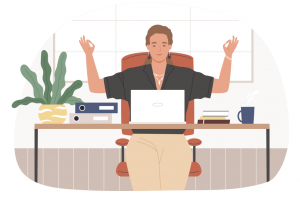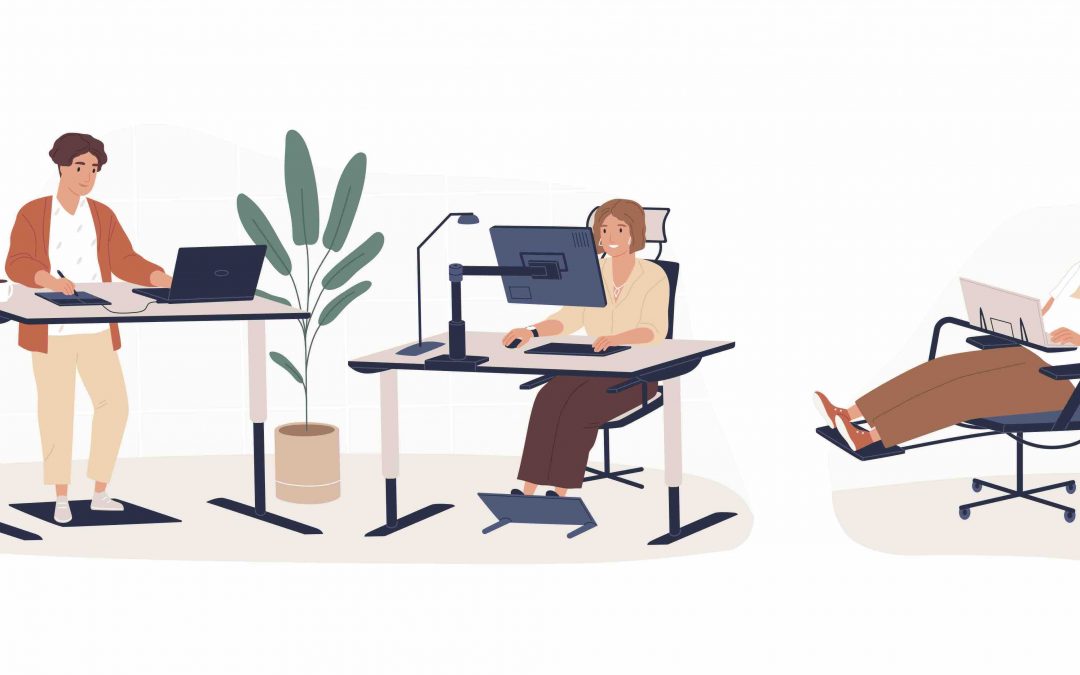Set up three positions to work in.
Set up three options to work in. The simplest three are sitting, standing and lounging. Rotate through them every hour. This cuts the strain on your body dramatically when compared to spending most the day in any one of the positions.
Add sound and light buffers.
Add curtains to filter direct sunlight and reduce glare. Add lamps for soft light and LED or CFL lamps for task lighting if needed. Add a sound buffer by using a white noise machine, pink noise machine, fan, air filter, good speaker with ambient music or in the very least a pair of good headphones.
Add movement devices and prompts.
Bring things you like using into your workspace. The best are going to be things you can use while you work that facilitate movement. Balance boards are my favourite because they work well at standing desks (try rectangle ones not circle ones). You could try an air cushion to destabilize your pelvis and increase your core activity while you sit, or take a look at an active sitting chair. You could have little resistance bands, rollers and balls in your visual field to make sure than your thinking/fidgeting/waiting/in-between time is spent improving your physical health.
That’s it!
There are a lot more details that can help refine a workspace, but those are the basics. Each of these efforts will improve the impact working a day at home has on your body and brain. If you catch yourself making excuses as to why these wouldn’t work, challenge yourself to figure out a creative workaround. It’s worth the effort.
If you want more guidance, check out the WFH courses and the site workfromhomeergonomics.com



Recent Comments